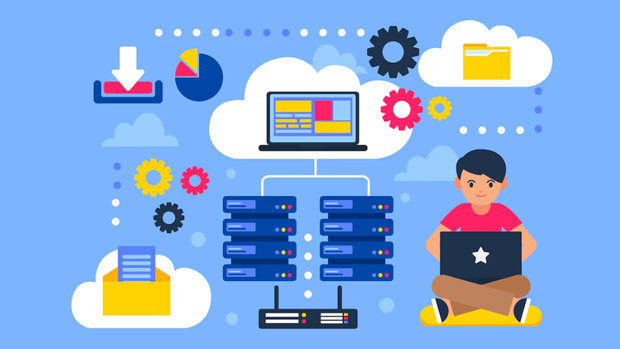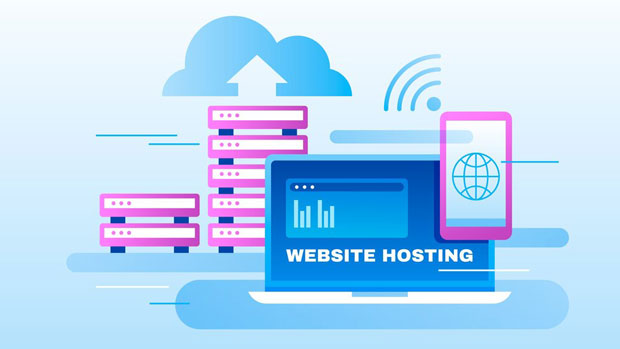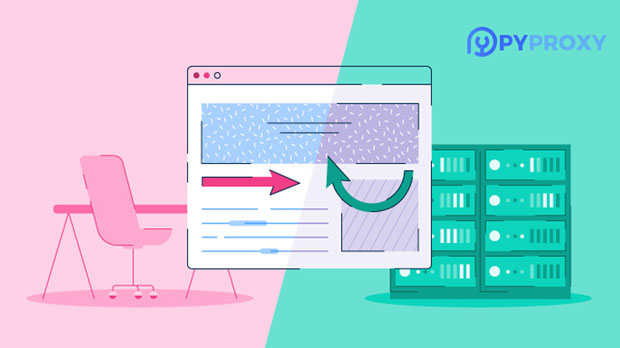In today’s rapidly evolving technological landscape, the need for efficient and low-latency proxy solutions has become increasingly essential. Two popular proxy servers, PYPROXY and MiniProxy, have attracted significant attention due to their ability to manage traffic and optimize web requests. A key area of comparison between these two proxies is their performance in terms of latency under the HTTP protocol. Understanding which of these proxies delivers superior performance can help users make informed decisions when selecting a proxy solution for various applications, such as web scraping, data access, or anonymous browsing. This article explores the latency performance of PyProxy and MiniProxy in detail, providing a thorough analysis to determine which offers better latency performance under the HTTP protocol. Understanding Latency in Proxy ServersLatency, in the context of proxy servers, refers to the time it takes for a data packet to travel from the client to the server and back, with minimal delay. In practical terms, lower latency is crucial for activities that require real-time data exchange, such as live streaming, gaming, and financial transactions. Proxy servers act as intermediaries between the client and the target server, and the efficiency with which they handle traffic directly affects latency.When comparing proxy servers, latency is influenced by several factors, including the protocol used, the geographical location of the proxy server, the type of traffic being handled, and the efficiency of the proxy server’s internal architecture. PyProxy and MiniProxy are two such solutions that utilize the HTTP protocol, which is the foundation of data communication on the web. The following sections delve deeper into each proxy's latency performance in an HTTP environment.PyProxy: Performance and FeaturesPyProxy is a proxy server built with Python, designed for flexibility and ease of use. It can be customized to handle specific traffic needs, making it a versatile choice for developers who require tailored solutions. PyProxy operates with HTTP and other protocols, with an emphasis on minimal latency in high-traffic scenarios.One of PyProxy's main advantages is its lightweight design, which can contribute to lower latency. It supports connection multiplexing, meaning it can handle multiple requests at once without significant overhead, which can help reduce delays. PyProxy’s optimization mechanisms are implemented using Python libraries like asyncio, ensuring that data is processed quickly and efficiently.However, one limitation of PyProxy is its reliance on Python as the programming language. While Python is great for flexibility, it is not as optimized for speed compared to compiled languages like C or Go, which can introduce a slight overhead in latency, especially in high-demand environments. Despite this, PyProxy's architecture allows for continuous updates and improvements, enabling it to keep up with the latest requirements in low-latency performance.MiniProxy: Performance and FeaturesMiniProxy, on the other hand, is a lightweight and fast proxy solution that is optimized for low-latency performance. It is specifically designed to be minimalistic, which can significantly reduce the amount of processing needed to handle requests. MiniProxy uses a simpler structure and has fewer dependencies, which can improve response times and reduce the likelihood of bottlenecks.MiniProxy’s latency performance can be attributed to its minimalistic design. It supports the HTTP protocol and focuses on providing basic proxy functionality without the complexity seen in more feature-rich proxies. This makes it an excellent choice for applications that prioritize speed and efficiency over advanced features.Despite its simplicity, MiniProxy has some drawbacks. For instance, the lack of advanced features such as connection multiplexing means it may struggle in handling high traffic loads. The lack of customization options can also make it less suitable for developers who need a more tailored solution. While its performance is impressive in low-load situations, its latency can increase significantly under heavy usage, as it lacks the ability to handle multiple simultaneous connections efficiently.Latency Comparison: PyProxy vs. MiniProxyWhen comparing the latency performance of PyProxy and MiniProxy under the HTTP protocol, it is essential to consider several factors:1. Processing OverheadPyProxy’s reliance on Python can introduce processing overhead that affects latency, especially when dealing with high volumes of traffic. Python, being an interpreted language, is generally slower than compiled languages. This processing overhead can lead to higher latency compared to MiniProxy, which is optimized for speed and simplicity. MiniProxy’s minimalistic design reduces the time spent on processing each request, resulting in lower latency in environments with limited traffic.2. Traffic Handling EfficiencyPyProxy's connection multiplexing allows it to handle multiple requests concurrently, which can reduce latency in environments where there is a need to process many simultaneous connections. However, this capability comes at the cost of increased complexity and potential overhead in certain scenarios. MiniProxy, with its simple design, cannot handle multiple connections as efficiently, which can lead to higher latency when faced with a large number of requests.3. Scalability and Load BalancingScalability plays a significant role in latency performance. PyProxy’s ability to scale effectively due to its architecture and connection handling mechanisms makes it a better option in high-traffic scenarios. In contrast, MiniProxy may struggle to maintain low latency under heavy loads due to its simplicity and lack of advanced traffic management features.4. Latency Under Different Network ConditionsBoth PyProxy and MiniProxy can perform well under optimal network conditions. However, in environments with fluctuating network speeds or congestion, the ability of PyProxy to handle traffic more efficiently through features like connection multiplexing and optimizations in its Python code allows it to maintain relatively stable latency. MiniProxy, with its simpler architecture, might experience more noticeable latency spikes under similar conditions.Which Proxy is Best for Latency Performance?In general, the best proxy for latency will depend on the specific use case. For scenarios that require handling high traffic loads, real-time data processing, or multiple simultaneous connections, PyProxy is likely to perform better due to its connection multiplexing capabilities and optimization techniques. While the overhead introduced by Python might increase latency in some situations, PyProxy is still highly competitive when it comes to complex or dynamic environments.For simple applications where minimal latency is required with fewer simultaneous connections, MiniProxy can offer better performance due to its lightweight and straightforward design. Its simplicity makes it a fast and efficient proxy for lower traffic loads, although it may not scale well in more demanding environments.ConclusionWhen comparing PyProxy and MiniProxy in terms of latency under the HTTP protocol, PyProxy tends to offer better overall performance in high-traffic or complex scenarios due to its ability to handle multiple connections efficiently. MiniProxy, while excellent in low-load environments, may struggle to maintain low latency under heavy usage. Choosing between the two ultimately depends on the specific needs of the user, such as the volume of traffic, required features, and scalability. Both proxies have their strengths and weaknesses, but when latency is a critical factor, PyProxy generally has the edge in performance.
Sep 03, 2025


































































